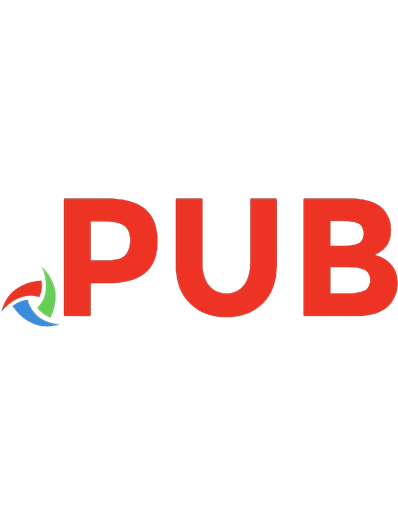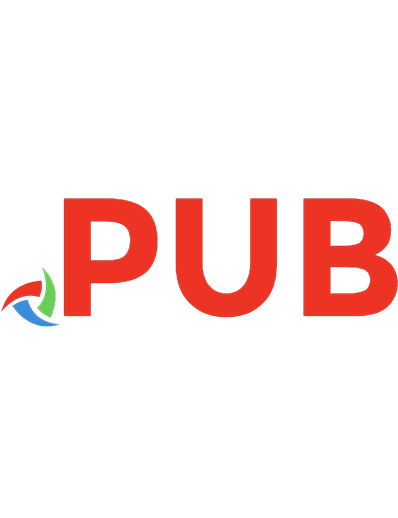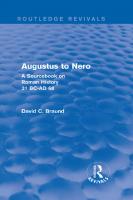Global Environmental History: 10,000 BC to AD 2000 9780748629510
GBS_insertPreviewButtonPopup('ISBN:9780748621590'); Courses which deal with environmental history have long
167 19 2MB
English Pages 288 [289] Year 2008
Polecaj historie
Citation preview
G E H
G E H 10,000 to 2000
I. G. S
EDINBURGH UNIVERSITY PRESS
© I. G. Simmons, 2008 Edinburgh University Press Ltd 22 George Square, Edinburgh Typeset in Minion by Servis Filmsetting Ltd, Manchester, and printed and bound in Great Britain by Cromwell Press, Trowbridge, Wilts A CIP record for this book is available from the British Library ISBN 978 0 7486 2158 3 (hardback) ISBN 978 0 7486 2159 0 (paperback) The right of I. G. Simmons to be identified as author of this work has been asserted in accordance with the Copyright, Designs and Patents Act 1988. Grateful acknowledgement is made for permission to reproduce material previously published elsewhere. Every effort has been made to trace the copyright holders, but if any have been inadvertently overlooked, the publisher will be pleased to make the necessary arrangements at the first opportunity. Unacknowledged plates, figures and tables are © Ian Simmons
Contents List of tables List of figures Preface
viii ix x
Prologue: M An approach to a complex history States of change Perspectives
xii xiii xiv xv
Chapter 1 R Some assumptions Basic demography Material linkages in human–environment relationships Talking to ourselves Local, regional, continental, hemispherical, global A transition to the later chapters
1 2 6 8 13 17 19
Chapter 2 T - ‘Joint tenants of the world’ The cultural ecology of gatherer-hunters Evolution and dispersal The energy relationships of gatherer-hunters ‘The first great force employed by man’ Management and impact The diminution of foraging societies Proper respect: hunter-gatherers in a cohesive world Buying the land: fragmentation in the foragers’ worlds Representing hunters and gatherers Outcomes Hunter-gatherers in their ecosystems Foundations of the foragers’ environmental history
24 25 26 26 27 29 35 38 39 40 41 43 44 45
Chapter 3 P- ‘No god like one’s stomach’
52 53
vi
G E H The cultural ecology of agriculture Evolution and dispersal Environmental relationships Fire and the farmer Management and impact Diminution and disappearance Sewing the world together All coherence gone? Representing this world Outcomes The world on the cusp of industrialisation Technologies of a solar-powered era The emergence of philosophies
54 54 58 61 63 86 87 90 93 94 94 95 96
Chapter 4 A A second Iron Age The cultural ecology of industry Evolution and dispersal Environmental relationships Management and impact Prometheus’ next bound Moral, intellectual and material The collapse of continuity Representing industriousness A waste land?
109 110 111 111 114 117 143 146 150 153 154
Chapter 5 A - ? I saw it on TV The cultural ecology of the world after 1950 Evolution and dispersal Environmental relationships Management and impact Insider knowledge Increased population, higher consumption Technology and ‘progress’ Superpower: coalescence after 1950 No power here Screening the world? Tensions A haste land?
167 168 169 170 171 176 195 196 197 199 201 203 205 209
Chapter 6 E Ignoring the snap-locks
218 219
C Under the sun Minding our language Postmodernity and environment The ecology of emotion Religion Myth, symbol, value Parts and wholes Unpredictable woods and pastures ‘The balance of nature’ The ‘nature’ of consciousness The drive to dominion At the year 2000 Knowing where we are Rolling smithy-smoke Indra’s internet? Further reading Glossary List of Acronyms Index
vii 220 220 222 223 226 227 229 232 233 235 237 239 239 244 245 255 256 261 262
T In the body of the text, words which are defined and explained in the Glossary are printed in bold face. Any other typographical enhancements are for local emphasis only.
C Under the sun Minding our language Postmodernity and environment The ecology of emotion Religion Myth, symbol, value Parts and wholes Unpredictable woods and pastures ‘The balance of nature’ The ‘nature’ of consciousness The drive to dominion At the year 2000 Knowing where we are Rolling smithy-smoke Indra’s internet? Further reading Glossary List of Acronyms Index
vii 220 220 222 223 226 227 229 232 233 235 237 239 239 244 245 255 256 261 262
T In the body of the text, words which are defined and explained in the Glossary are printed in bold face. Any other typographical enhancements are for local emphasis only.
Tables 1.1 3.1 4.1 4.2 5.1 5.2 6.1 6.2
Gross energy expended by humans in history Dates of transition from intensive hunting and gathering to agriculture Environmental impact of the city World land transformation 1700–1950 Environmental surprises since 1950 Levels of consumption Changes in the understanding of land-cover and landuse changes Shifts in attitude in recent decades
viii
10 55 133 143 175 208 241 242
Figures 1.1 2.1 3.1 4.1 5.1 6.1
Kleine Orgel (small organ) at St Jacobskirche in Lübeck Depiction of an owl in the Hillaire Chamber of La Grotte Chauvet-Pont-d’Arc Felipe Guaman Poma de Ayala: Nueva corónica y buen gobierno (c.1615–16) Derwentcotes Steel Mill Joseph Beuys’s The End of the Twentieth Century, 1982–83 (detail) Garden of the Ryoanji temple in Kyoto
ix
1 24 52 109 167 218
Preface This book completes a trio of planned works at different spatial scales: that of the country (Britain), an internal landscape type (moorlands) and now the whole globe.* The timescale has been the same in all of them: the last 10,000 years. When people ask, ‘what are you writing?’, and you tell them, then the usual reaction is one of amusement, qualified by a nod in the direction of the poor old fellow’s age. They may well be right but, inspired by some other attempts at ‘big’ history, I wanted to try. As Chapter 1 shows, I want to move the writing of environmental history further in the direction of inclusiveness. I believe that the natural sciences are very important but they are not the whole story because they sit in the type of social framework analysed by the social sciences and the humanities. Hence there is reference to a wide variety of work in this volume. Beyond that, I have no methodological ambitions: I do not think that there is a ‘right’ way to write environmental histories. Any book has to be selective: it would be impossible to mention even every outstanding example of the processes that have been chronicled, and so those included comprise both the obvious and the eccentric. Some cannot be ignored, while others result from trawls through the literature or, increasingly, a period of surfing the net. The last is influential in one particular way: I have not (as in my other books) included a plethora of numerical tables and graphs. All the information in them is always badly out of date by the time a book actually appears, and readers will find it easier to go to a website and call up the latest data. Some sites are specified, others not, but appropriate government departments, the United Nations Environment Programme (UNEP), and bodies such as the World Resources Institute, the Population Reference Bureau, and the World Wide Fund for Nature (WWF) will provide necessary numbers and graphics. Another initial point to make is that this is a book of history and not prognosis. I have tried wherever possible to end the narrative at the year 2000 though, in Chapter 5, this gets to be more or less impossible because so many trends simply carry on at the point where they have been discussed quite recently. If there is anything to be carried forward then it is the suggestion that * An Environmental History of Great Britain from 10,000 years ago to the Present, Edinburgh University Press, 2001; The Moorlands of England and Wales. An Environmental History 8000 – 2000, Edinburgh University Press, 2003.
x
P
xi
major changes have involved technological developments (agriculture, the use of fossil fuels) and that the future will as likely be driven by an equivalent change as by the more modest requirements of environmentalists. But any future seems likely to have to respect the laws of physics and the biogeochemistry of the planet: a revived potential for the ideas of environmental determinism, perhaps. In line with my other books, then, I have used human access to energy sources as a periodisation device. This has its disadvantages in terms of asynchrony and accusations of technological determinism but has the up-side of connecting with lively debates at the present time for I do not believe that history is culturally irrelevant, only that it may not be an accurate guide to the future. In social terms, increased access has allowed social differentiation and so cultural fragmentation has resonated in our attitudes to nature. It is not so simple, of course: for the world has long been subject to coalescence by both natural and cultural processes of diffusion, if that last word can be decently applied to electronic communication as well as medieval trade. Even though three-score years and ten is now reckoned to be no age at all in western countries, it is always possible that I may not write any more books. So this is a good time to acknowledge all the generous encouragement and help that I have had from so many people over a forty-year career in academia: colleagues and friends at Durham, Peter Haggett in Bristol, academics in sister universities in several countries (with special thanks to Aberdeen for the honorary doctorate and to the ACLS for a postdoctoral fellowship at Berkeley), my teachers and postgraduate supervisors at UCL, quiet neighbours, GPs, and cats. There are too many names to mention individually but not a day goes by without thinking of one of you. From Berkeley Square to George Square, John Davey has always been a constant source of discriminating encouragement. It is a source of great pleasure to me that the book will be published in the USA by the University of Chicago Press, since it was their Man’s Role in Changing the Face of the Earth (ed. W. L. Thomas) in 1956 that more than any other book turned me to this kind of topic. My offspring, Catherine and David, are also a great inspiration in several ways, and grandchildren are just the sheer pleasure needed to offset some of the things our species has been responsible for perpetrating. All my books have been written while married to Carol and so she is present within all of them. If the publishers allowed watermarks in books, then her name and picture would be visible on every page. I. G. Simmons Durham, October 2007
Prologue Mustering the marks 200
2000
18 ky Hunter-gatherers
150
1800
100
1600 Sulphates 1400
50
1200
0
Sulphates (ng/g)
Developement of articulated body of environmental thought, written after
Methane (ppb)
Actual effects as measured by science
1800 800
10 ky
Methane
300
290
Agricultural 280
340
Nitrous oxide
Industrial
CO2 (ppm)
320
270
260 4
300 CO2
3
380
AD 1950
2 260
Post-industrial 1
Present
0 1000 1100 1200 1300 1400 1500 1600 1700 1800 1900 2000 2100 Year AD
> Environmental constraints: topography, climate etc.

![Money, Currency and Crisis: In Search of Trust, 2000 BC to AD 2000 [1 ed.]
1138628352, 9781138628359, 0367666634, 9780367666637](https://dokumen.pub/img/200x200/money-currency-and-crisis-in-search-of-trust-2000-bc-to-ad-2000-1nbsped-1138628352-9781138628359-0367666634-9780367666637.jpg)
![Money, Currency and Crisis: In Search of Trust, 2000 BC to AD 2000 [1 ed.]
1138628352, 9781138628359, 0367666634, 9780367666637](https://dokumen.pub/img/200x200/money-currency-and-crisis-in-search-of-trust-2000-bc-to-ad-2000-1nbsped-1138628352-9781138628359-0367666634-9780367666637-h-2232753.jpg)

![Early Metallurgical Sites in Great Britain: BC 2000 to AD 1500 (Matsci) [1 ed.]
0901462845, 9780901462848](https://dokumen.pub/img/200x200/early-metallurgical-sites-in-great-britain-bc-2000-to-ad-1500-matsci-1nbsped-0901462845-9780901462848.jpg)





